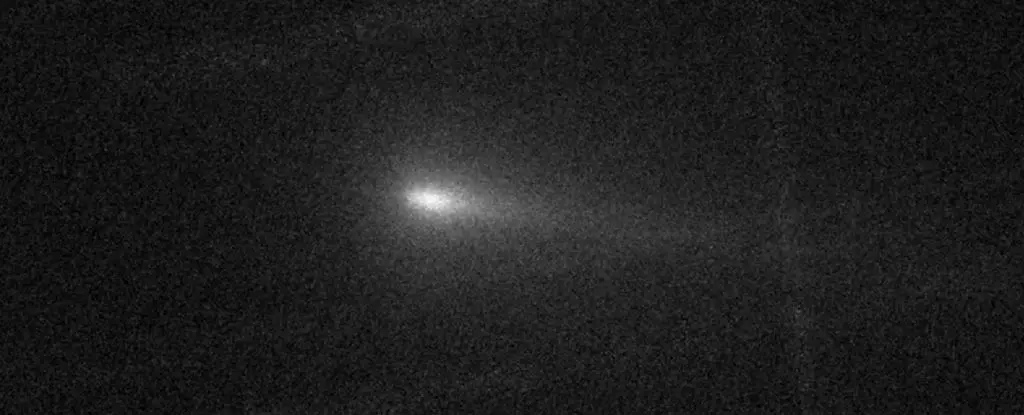As the cosmic dance of the solar system unfolds, the anticipated Comet C/2024 S1, a Kreutz sungrazer, is presenting an unexpected spectacle. Initially forecasted to brighten the night sky sufficiently for naked-eye observations by Halloween 2024, it appears that this comet is unraveling even as astronomers prepare their telescopes. Discovered on September 27, C/2024 S1 seems to be facing disintegration on its quest toward the Sun, evoking both disappointment and intrigue among the astronomical community and enthusiasts alike.
The trajectory of Comet C/2024 S1 is remarkable, bringing it within just 1.2 million kilometers (750,000 miles) of the Sun on October 28, 2024. This close encounter, known as perihelion, usually subjects comets to extreme heat and gravitational forces that can trigger significant changes in their structure. Historically, many comets that venture near the Sun exhibit signs of instability. In the case of C/2024 S1, astronomical observations over the month of October indicated a troubling pattern: a brightening accompanied by outbursts, followed by a rapid dimming that hints at a potential fragmentation of its nucleus.
The initial explosions of gas and dust, which briefly intensified the comet’s brightness, are phenomena observed in other comet encounters, raising the specter of spaghetti-like disintegration under the maelstrom of gravitational pull and heat. Such events often serve as precursors to more profound structural changes; C/2024 S1’s brightness could be attributed to the sublimation of volatiles as it approaches the Sun, revealing the fragility of its icy composition.
Comets, made primarily of frozen gases and rock, harbor internal dynamics that can lead to their destruction as they approach stellar bodies. When a comet experiences sublimation, the conversion of ice to gas can induce dramatic changes, including accelerating rotation. As the comet spins faster, centrifugal forces may overpower the structural integrity of the nucleus, causing fragmentation. The phenomenon was spectacularly observed in 2020 with Comet C/2019 Y4, which gave way to collapsing pieces amid the scrutiny of the Hubble Space Telescope.
A warning was sent out via the Astronomer’s Telegram, indicating observable changes that point to the comet’s imminent disintegration. Images captured by Czech amateur astronomer Martin Mašek on October 20 and 22 revealed potential loss of the nucleus’s bright central structure, leading to worries that what could have been a stellar display may fade into an ephemeral ghost of cosmic past.
Hope Amidst Fragmentation
While the disintegration of C/2024 S1 is indeed a source of disappointment for stargazers, there may still be glimmers of hope. Even if the nucleus falters under immense solar pressure, it is possible that fragments of the comet could survive the thermal onslaught and continue on their journey. Additionally, the comet could still boast a tail filled with dust and gas, elongating behind it and providing an awe-inspiring view against the backdrop of the cosmos.
Intriguingly, the Kreutz sungrazers, like C/2024 S1, are believed to be remnants of a larger cometary body—the Great Comet of 1106 CE. This historic comet has given rise to many smaller entities, each with its own tales of existence. Comet Ikeya-Seki, a prominent member of this family that graced the skies in 1965, serves as a reminder of the beauty and unpredictability inherent to these celestial wanderers.
Currently, C/2024 S1 may still be observable using binoculars or small telescopes, particularly within the Southern Hemisphere. However, as this ephemeral cosmic visitor draws closer to perihelion, its future remains uncertain. The possibility of a long, trailing tail devoid of a bright nucleus presents an intriguing scenario for viewers. If the comet does fragment, it may still offer a unique spectacle for astronomers, albeit one that diverges from traditional expectations of a comet with a bright, prominent head.
The anticipated show of C/2024 S1 reminds us of the unpredictable nature of celestial phenomena—both exhilarating and humbling. Cosmic watchers are reminded to remain vigilant, as the remnants of this comet and its trailing dust could illuminate the night sky for weeks to come. As this cosmic journey unfolds, we can only hope for the best and engage in the tantalizing pursuit of one of nature’s most mysterious displays. Happy hunting to all!


Leave a Reply